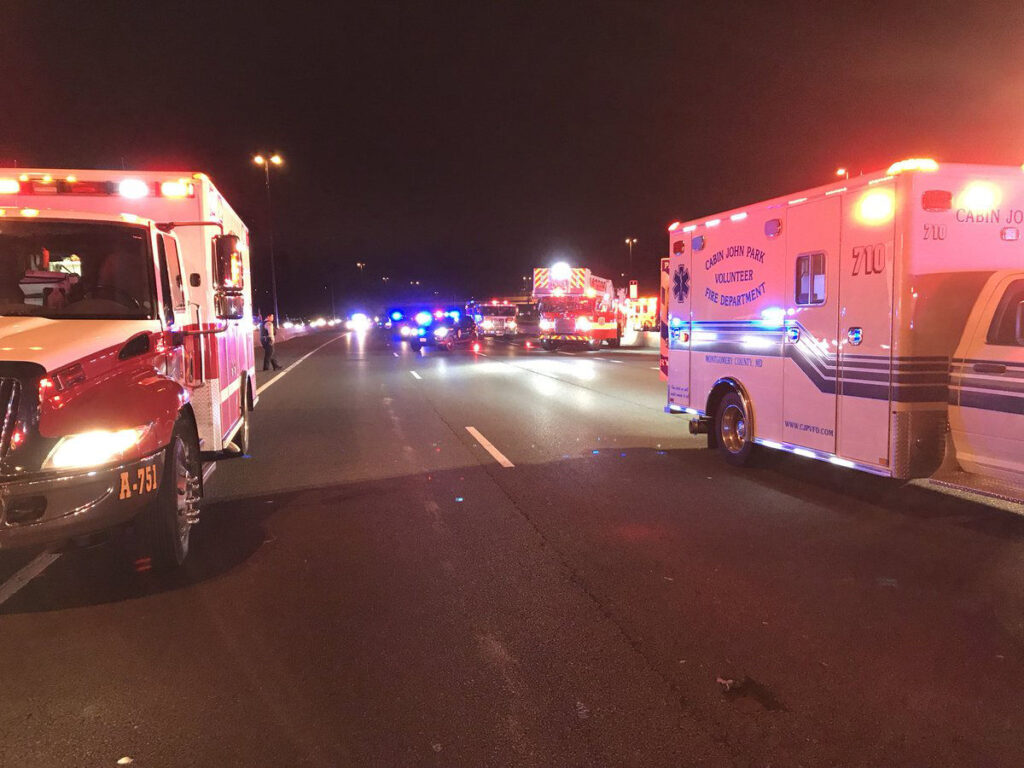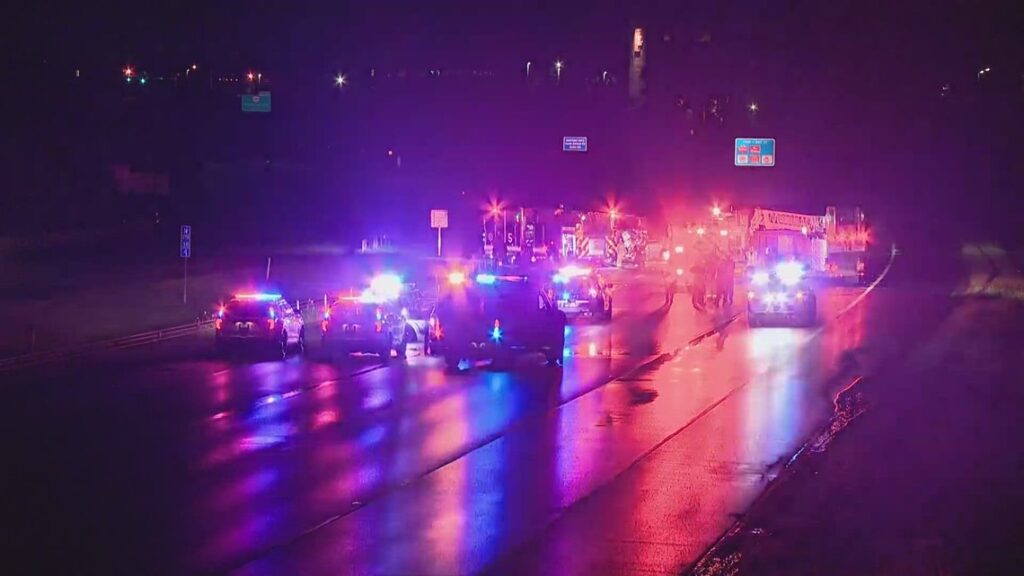Table of Contents
The Crash on 270 Jersey Barrier Friday has raised serious concerns about highway safety. This incident took place during peak traffic hours, and it highlighted the need for better safety measures on our roads. Jersey barriers, which are often used to separate lanes and prevent accidents, played a key role in this crash. Understanding how this crash occurred and what could have been done differently is important for improving road safety in the future.
As traffic continued to flow on the busy highway, the Crash on 270 Jersey Barrier Friday caused major delays and led to a quick emergency response. This event reminds us of the challenges our roads face daily and shows the importance of reviewing safety protocols. In this post, we’ll break down the key details of this crash, the role of jersey barriers, and ways we can make our highways safer for everyone.
The Role of Jersey Barriers in Highway Safety: Why They Matter
Jersey barriers are concrete dividers used on highways to keep traffic safe. They help prevent cars from crossing into the wrong lanes and reduce the impact of collisions. These barriers are strong and designed to absorb the energy of a crash, redirecting vehicles safely back into their lane.
In the Crash on 270 Jersey Barrier Friday, the jersey barrier did its job by preventing a more serious situation. Without the barrier, the vehicle might have crossed into the oncoming lanes, causing a multi-car accident. The barrier’s role is crucial in keeping drivers safe, especially on highways with high-speed traffic.
- They reduce the chances of cars crossing into other lanes
- Jersey barriers help absorb the shock from collisions
- These barriers are tested for safety and efficiency
- They are easy to install and maintain, making them an ideal choice for highways
It’s clear that jersey barriers are a key part of making highways safer. While they can’t prevent every accident, they can significantly reduce the severity of crashes, helping to save lives.
Crash on 270 Jersey Barrier Friday: Emergency Response and What Was Done Right

When the Crash on 270 Jersey Barrier Friday occurred, emergency response teams acted quickly. They followed well-established procedures to help those involved and manage the situation. Within minutes of the crash, police and medical teams arrived at the scene. This quick response is crucial in reducing injuries and preventing further accidents.
After securing the scene, emergency responders started helping those in need. Ambulances were dispatched to treat any injured drivers or passengers. Police officers directed traffic to ensure that the area remained safe for other vehicles. Traffic management systems were put into action to prevent more crashes.
- First responders arrived within minutes of the crash
- Cops coordinated traffic and got the region
- Clinical groups gave quick attention to the harmed
- Traffic management measures helped avoid further accidents
The fast and efficient emergency response helped minimize the damage from the crash. This shows the importance of well-prepared emergency teams and their ability to act when needed most.
How Weather Affected the Crash on 270 Jersey Barrier Friday
Weather conditions can play a big part in accidents on highways. In the case of the Crash on 270 Jersey Barrier Friday, weather might have been a factor in the vehicle losing control. Rain or snow, for example, can make roads slippery and harder to drive on, increasing the chance of accidents.
If there were wet or icy conditions on the road, this could have caused the vehicle to slide, making it harder for the driver to maintain control. In bad weather, even the best drivers can struggle to keep their vehicles safe. Weather is something that drivers need to consider when traveling, especially during harsh conditions.
- Slippery roads can make it difficult for drivers to control their vehicles
- Downpour, snow, or mist can lessen perceivability and increment mishap risk
- Drivers should slow down and be cautious in bad weather conditions
It’s important to remember that weather can affect how vehicles perform on the road. This crash is a reminder to always drive carefully when the weather isn’t ideal.
Traffic Flow Disruption After the Crash on 270 Jersey Barrier Friday

The Crash on 270 Jersey Barrier Friday caused a significant disruption to traffic flow. Highways like 270 are busy during rush hours, and when a crash happens, it can lead to long delays. Many drivers were stuck in traffic for hours, causing frustration for everyone involved.
When crashes happen during peak times, they can back up traffic for miles. The authorities quickly implemented traffic management measures to help ease the congestion. This included setting up alternate routes, adjusting signal timings, and closing lanes temporarily to clear the area.
- Crisis vehicles had clear admittance to the scene
- Drivers were provided with real-time information about traffic conditions
- Alternate routes were activated to help reduce delays
- Lane closures were enforced to clear the wreckage safely
These measures are important in helping reduce the impact of a crash and allow traffic to move again as quickly as possible. However, crashes still create significant disruptions, making road safety even more important.
Lessons Learned from the Crash on 270 Jersey Barrier Friday: Moving Forward
The Crash on 270 Jersey Barrier Friday offers valuable lessons for highway safety. By reviewing the incident, experts can identify areas where improvements are needed. This might include better barrier placement, improved road surface conditions, or enhanced weather monitoring systems.
The crash also highlights the importance of driver education. Many accidents can be prevented if drivers follow safety rules and adjust their behavior based on the weather or road conditions. Increased public awareness can make a big difference in reducing crashes.
- Barrier maintenance and placement should be reviewed regularly
- Drivers need more education on safe driving practices
- Standard security reviews can assist with recognizing likely dangers
- New technologies should be integrated into traffic management systems
Conclusion
The Crash on 270 Jersey Barrier Friday reminds us how important it is to have safe barriers and quick emergency responses on our roads. Even though jersey barriers can help reduce accidents, it’s clear that weather, traffic conditions, and other factors can still lead to crashes. By learning from this incident, we can make roads safer for everyone.
To prevent similar accidents, we need to keep improving safety measures and educate drivers. Regular maintenance of barriers, better traffic management, and more awareness about road safety can all help reduce crashes. Let’s keep working together to make our highways safer for all drivers.
FAQs
Q: What caused the Crash on 270 Jersey Barrier Friday?
A: The crash was caused when a vehicle lost control, hitting the jersey barrier. Weather and traffic conditions may have contributed to the incident.
Q: How do jersey barriers help prevent accidents?
A: Jersey barriers keep vehicles in their lanes and reduce the chances of cars crossing into oncoming traffic, minimizing the impact of crashes.
Q: Was the emergency response quick during the crash on 270 Jersey Barrier Friday?
A: Yes, emergency teams arrived within minutes, securing the area and helping the injured quickly to reduce further risks.
Q: How does weather affect highway safety?
A: Weather conditions like rain, snow, or fog can make roads slippery and reduce visibility, increasing the risk of accidents.
Q: What safety measures are being taken after the Crash on 270 Jersey Barrier Friday?
A: Authorities are reviewing barrier conditions, improving traffic management, and enhancing public awareness to prevent future crashes.
Q: How often are jersey barriers inspected for safety?
A: Jersey barriers are visually inspected every month, with full structural assessments done annually to ensure they remain effective.

